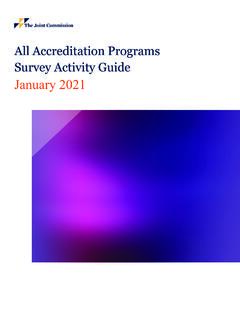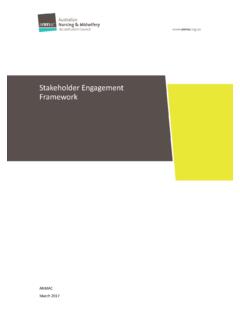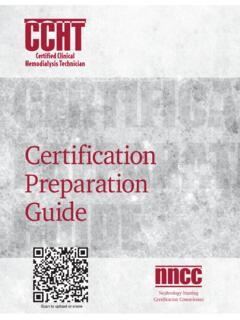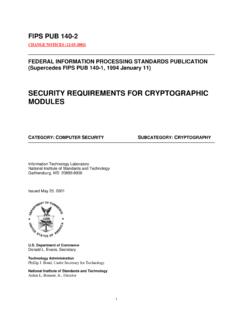Transcription of MEASURING COURSE LEARNING OUTCOMES - ed
1 Journal of LEARNING Design DESIGNING FOR EFFECTIVE LEARNING MEASURING COURSE LEARNING OUTCOMES Mohsen Keshavarz Educational Planning University of Tehran, Iran Abstract accreditation criteria of programs require effective LEARNING OUTCOMES , assessment with documented procedures, tools, results, and actions to close the assessment loop with broad faculty involvement. This article describes a methodology for providing quantitative measurement of a COURSE s LEARNING OUTCOMES . The methodology uses a linkage matrix that associates each COURSE LEARNING outcome to one or more COURSE assessment tool. The approach adopted provides a numeric score between 0 and 1 for each LEARNING outcome with respect to each assessment tool and a combined score be calculated for each LEARNING outcome from the tools associated with that outcome .
2 The proposed methodology also provides insights into the consistency of the various assessment tools used to measure the achievement of a particular COURSE LEARNING outcome . The methodology described here has been successfully adopted in obtaining accreditation and reaccreditation to all programs offered by College of Computer Engineering at University of Tehran. Keywords COURSE OUTCOMES ; COURSE assessment; LEARNING OUTCOMES ; accreditation Introduction Academic program assessment and evaluation is becoming an important process in providing improved education to students through modified curriculum and instruction. Assessment has also become a tool of accountability in education by providing evidence on the effectiveness of teaching (Biney et al., 2008).
3 An assessment plan determines how well students are benefiting from a LEARNING experience offered by a program of study. We accept here that assessment: .. is an ongoing process aimed at understanding and improving student LEARNING . It involves making our expectations explicit and public; setting appropriate criteria and high standards for LEARNING quality; systematically gathering, analysing, and interpreting evidence to determine how well performance matches those expectations and standards; and using the resulting information to document, explain, and improve performance. When it is embedded effectively within larger institutional systems, assessment can help us focus our collective attention, examine our assumptions, and create a shared academic culture dedicated to assuring and improving the quality of higher education.
4 (Angelo, 1995, pp. 7-9) Over the last few years, the LEARNING OUTCOMES of a subject or COURSE of study have become the focus of national and international conferences, and in peer-reviewed education literature, as a means of assessing the knowledge and skills obtained from LEARNING opportunities. LEARNING OUTCOMES have applications at three distinct levels: (i) the local level of the individual higher education institution for COURSE units/modules, programs of study and qualifications; (ii) the national level for qualifications frameworks and quality assurance systems; and (iii) 2011 Vol. 4 No. 4 1 Journal of LEARNING Design Keshavarz internationally (for wider recognition and transparency purposes (Adam, 2004). LEARNING OUTCOMES focus on the measurable cognitive, behavioral and attitudinal development of students as they interact with a LEARNING activity.)
5 They are what students are expected to demonstrate in terms of knowledge, skills, and attitudes upon completion of a LEARNING experience (Adam, 2004; Ashiem, Gowan & Reichgelt, 2007). LEARNING OUTCOMES and OUTCOMES -based approaches have implications for curriculum design, teaching, LEARNING and assessment, as well as quality assurance. They are likely to form an important part of the twenty-first century approaches to higher education and the reconsideration of such vital questions as to what, who, how, where and when we teach and assess (Adam, 2004). In terms of curriculum design and development, LEARNING OUTCOMES are at the forefront of educational change. They represent a change in emphasis from teaching to LEARNING that characterise what is known as the adoption of a student-centered approach in contrast to traditional teacher-centered viewpoint.
6 Student-centered LEARNING produces a focus on the teaching- LEARNING -assessment relationship and the fundamental links between the design, delivery and measurement of LEARNING (Adam, 2004). To implement a LEARNING OUTCOMES approach, a program must first formulate program educational objectives (broad goals) that address institutional and program mission statements and are responsive to the expressed interests of program stakeholders. The program must then formulate a set of program LEARNING OUTCOMES (knowledge, skills, and attitudes the program graduates should have) that directly address the educational objectives and encompass certain specified OUTCOMES that are related to the particular program being assessed. The program educational objectives and OUTCOMES must be explicit.
7 The next step is to formulate a set of measurable LEARNING OUTCOMES for each COURSE in the curriculum. Based on these COURSE LEARNING OUTCOMES , a mapping is constructed between the program LEARNING OUTCOMES and COURSE LEARNING OUTCOMES . This mapping is used as a part of a process to provide a quantitative measurement of the attainment of program LEARNING OUTCOMES based on the degree to which COURSE LEARNING OUTCOMES have been achieved according to specified criteria. Program LEARNING OUTCOMES are also assessed by using other indirect assessment tools such as alumni survey forms, exit survey forms, employer survey forms, and internships (Ashiem et al., 2007). Indirect measures include data from surveys of seniors and alumni, retention rates, graduation rates, and number of students progressing to advanced degrees.
8 While they allow administrators, faculty, researchers, and consumers to infer the benefits to students from their years in college, they cannot report with precision exactly what students have learned or what they are capable of doing as a result of their university education. Historically, offices of institutional research and alumni offices have collected this kind of data. Direct measures provide more evidence of the increase in students knowledge and abilities over a period of time. Standardised tests, for example, the Collegiate LEARNING Assessment (CLA), provide one kind of direct measure. While the CLA assesses general education skills, other standardised tests can measure specific disciplinary knowledge. The Force Concept Inventory, for instance, is used to determine students understanding of concepts in mechanics.
9 Other examples of direct measures include assignments that ask students to perform some kind of conceptual task ( , create a concept map) or portfolios compiled over a COURSE of study. It is important to emphasise that these student work products need to be systematically reviewed for evidence of LEARNING in order for them to be of most use. For example, rubrics can be developed and used by groups of faculty or educational researchers to analyse papers, theses, or portfolios in order to assess LEARNING . Grades, of COURSE , can also be a measure of LEARNING although how the grades are determined and reported can sometimes undermine their usefulness. However, COURSE LEARNING OUTCOMES are crucial to the process. Among other things, they enable the program to demonstrate precisely how specific program LEARNING OUTCOMES are addressed in the curriculum.
10 If COURSE LEARNING OUTCOMES are then assessed continuously and the results are used to 2011 Vol. 4 No. 4 2 Journal of LEARNING Design Keshavarz improve instruction that address them, then the degree to which the program meets its self-selected goals must inevitably improve. The contribution of this article is to describe a methodology that can be used to provide a quantitative measurement of the attainment of each COURSE LEARNING outcome . Formulating COURSE LEARNING OUTCOMES Once the program goals and program LEARNING OUTCOMES have been articulated and the curriculum has been designed, measurable COURSE LEARNING OUTCOMES must be developed for each COURSE in the curriculum. Each COURSE LEARNING outcome must map to at least one program LEARNING outcome to ensure that all courses in the program of study are addressing the overall program LEARNING OUTCOMES .
















